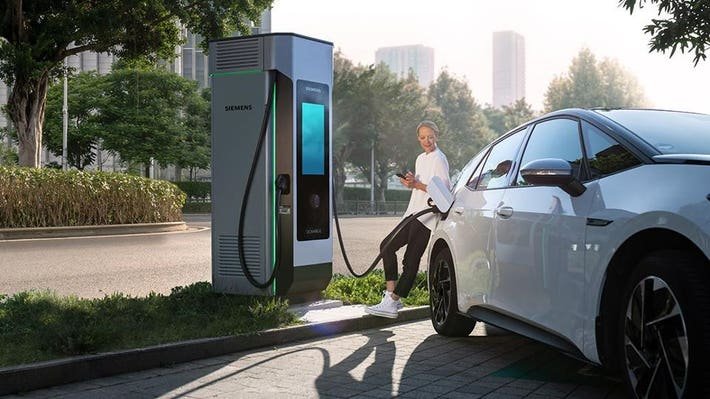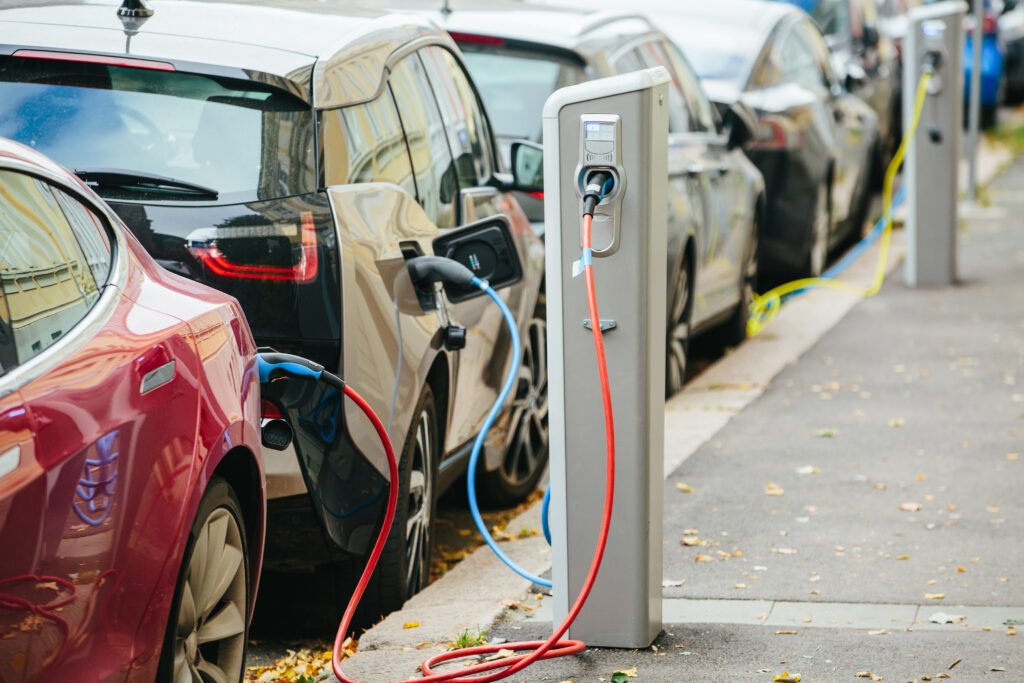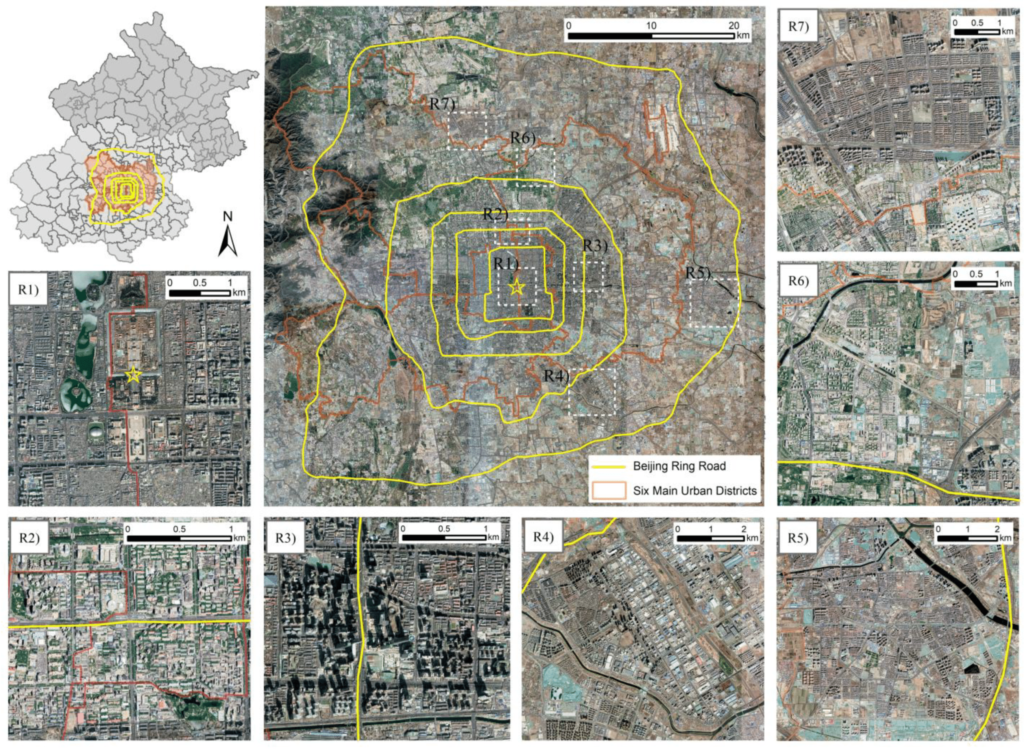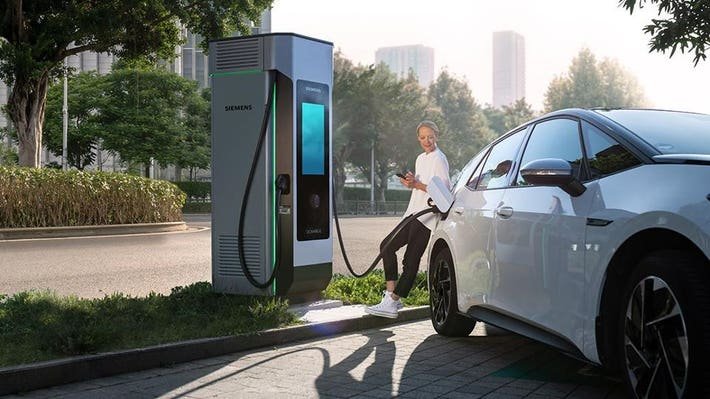Imagine cruising down the bustling streets of a vibrant city in your sleek electric vehicle, effortlessly gliding past gridlocked traffic and leaving a trail of admiration in your wake. As an electric vehicle owner in an urban environment, you have undoubtedly experienced a unique set of joys and challenges. From the thrill of zero-emission driving to the hunt for charging stations, your experiences have shaped your perspective on urban transportation. In this article, we will explore the fascinating world of electric vehicle ownership in urban environments and discover the triumphs, hurdles, and everything in between.
Charging Infrastructure
Availability of charging stations
As an electric vehicle owner in an urban environment, you’ll find that the availability of charging stations has significantly increased in recent years. With the growing demand for electric vehicles, governments, businesses, and individuals are recognizing the need for a comprehensive charging infrastructure. As a result, you’ll find charging stations in various locations, including shopping malls, parking lots, hotels, and even on public streets. This widespread availability of charging stations ensures that you’ll have multiple options to charge your vehicle conveniently.
Access to charging stations
Access to charging stations is typically straightforward and user-friendly. Many charging stations are equipped with user-friendly interfaces and instructions that guide you through the charging process. Depending on the type of charging station, you may need a specific app or card to access and pay for the charging service. However, with the increasing standardization of charging infrastructure, it is becoming easier to access different charging stations with a single payment method or app. Some charging stations even offer innovative features like reservation options, allowing you to plan your charging session in advance.
Reliability of charging stations
Reliability is a vital factor for electric vehicle owners, and the charging infrastructure has significantly improved in this regard. While occasional outages or maintenance issues may still occur, charging stations are generally reliable and efficient. Charging station operators are committed to ensuring that the stations are well-maintained and operational. Additionally, advancements in technology have led to faster charging times and better reliability. As electric vehicle ownership becomes more widespread, continued investment in charging infrastructure will further enhance its reliability and accessibility.
Range Anxiety
Concerns about the vehicle’s range
One common concern among electric vehicle owners, especially in urban environments, is range anxiety. Range anxiety refers to the fear of running out of charge before reaching a charging station. However, with technological advancements and the growing availability of charging stations, range anxiety is becoming less of an issue. Electric vehicles are now equipped with more powerful batteries, allowing for greater range on a single charge. Additionally, urban environments are usually well-equipped with charging infrastructure, ensuring that you’ll always have access to a charging station nearby, even during longer trips.
Planning trips with charging stations in mind
To alleviate any concerns about range anxiety, it’s advisable to plan your trips with charging stations in mind. In urban environments, this is relatively easy due to the abundance of charging stations. Numerous smartphone apps and websites provide updated information on charging station locations, availability, and even wait times. By plotting your route and identifying charging stations along the way, you can ensure that you have sufficient charging opportunities during longer journeys. With proper planning, you can confidently enjoy your urban electric vehicle experience without any worries about range limitations.
Impact on daily activities
Own an electric vehicle in an urban environment offers great convenience in terms of daily activities. Firstly, you can easily charge your vehicle overnight at home, allowing you to wake up to a fully charged battery each morning. This eliminates the need for time-consuming visits to gas stations, as your vehicle’s “fueling” happens conveniently at home. Furthermore, the widespread availability of charging stations in urban areas means that you can seamlessly integrate charging into your daily routine. Whether you’re running errands, shopping, or working, you’ll likely find charging stations in close proximity to your regular destinations, making it incredibly convenient to top up your vehicle’s battery whenever needed.

This image is property of ars.els-cdn.com.
Cost of Ownership
Initial purchase cost
The initial purchase cost of an electric vehicle may be higher compared to traditional gasoline-powered vehicles. However, it’s crucial to consider the long-term savings and potential incentives that can offset this upfront investment. Various factors influence the purchase cost, including the vehicle’s brand, model, battery capacity, and available features. As technology advances and electric vehicles become more mainstream, the cost of ownership is expected to decrease. Additionally, many governments offer financial incentives, such as tax credits and rebates, to encourage the adoption of electric vehicles, making them more affordable for urban dwellers.
Operating costs (electricity vs. gasoline)
When it comes to day-to-day operating costs, electric vehicles have a significant advantage over their gasoline-powered counterparts. Electricity, which powers electric vehicles, is generally cheaper than gasoline, leading to lower fuel costs. Additionally, electric vehicles tend to require less maintenance compared to traditional vehicles, as they have fewer moving parts. Electric vehicles don’t require regular oil changes or fuel system checks, saving you both time and money. This reduced maintenance requirement can result in significant long-term cost savings, contributing to the overall cost-effectiveness of owning an electric vehicle in an urban environment.
Potential savings over time
While the upfront cost of purchasing an electric vehicle may seem higher, the potential savings over time can outweigh this initial investment. One of the significant cost advantages of electric vehicles is their energy efficiency. Electric vehicles typically require less energy to travel the same distance compared to gasoline-powered vehicles. This translates into lower fuel costs over time. Additionally, with the decreasing cost of renewable energy sources, such as solar power, you may have the opportunity to generate your electricity for charging at a significantly reduced cost or even for free, further enhancing the long-term cost savings.
Driving Experience
Performance and acceleration
Electric vehicles offer an exceptional driving experience, particularly in urban environments. The instant torque delivery of electric motors provides remarkable acceleration, allowing you to quickly navigate through city traffic. With their low center of gravity thanks to the battery placement, electric vehicles also offer excellent handling and stability. The seamless power delivery and smooth acceleration contribute to a pleasurable and responsive driving experience that truly stands out in urban settings.
Noise levels
One of the most noticeable differences between electric vehicles and traditional gasoline-powered vehicles is the noise level. Electric vehicles operate quietly, reducing noise pollution in urban environments. With their near-silent operation, electric vehicles create a serene and peaceful driving experience for both the driver and the surrounding community. The quietness of electric vehicles makes them ideal for urban living, where noise pollution can be a significant concern.
Comfort and interior features
Electric vehicles often prioritize comfort and innovation in their design. With fewer mechanical components, electric vehicles have more cabin space, allowing for ample legroom and storage capacity. Additionally, electric vehicles frequently feature advanced technologies and smart interior design elements. From intuitive touchscreens and digital instrument clusters to luxurious seating options and cutting-edge features like regenerative braking, electric vehicles offer a modern and comfortable driving experience that enhances your enjoyment of urban commuting.

This image is property of imageio.forbes.com.
Environmental Impact
Reduced carbon emissions
One of the compelling reasons to choose an electric vehicle in an urban environment is their positive environmental impact. Electric vehicles produce zero tailpipe emissions, significantly reducing carbon dioxide (CO2) emissions that contribute to climate change. Urban areas often have high concentrations of vehicles, making the reduction in air pollution particularly significant. By driving an electric vehicle, you’re actively contributing to reducing greenhouse gas emissions and promoting a cleaner and healthier urban environment for everyone.
Air quality improvement
Air quality is a significant concern in urban environments, where high traffic volumes and exhaust emissions contribute to poor air quality. Electric vehicles, with their lack of tailpipe emissions, help alleviate this problem. By driving an electric vehicle, you’re helping to improve air quality by reducing harmful pollutants such as carbon monoxide, nitrogen oxides, and particulate matter. This improvement in air quality has numerous benefits, including better respiratory health for urban dwellers and a decreased environmental impact on urban ecosystems.
Sustainability benefits
Electric vehicles play a vital role in promoting sustainability in urban environments. By transitioning from gasoline-powered vehicles to electric vehicles, you’re actively supporting a more sustainable transportation system. Electric vehicles use renewable energy sources, such as solar and wind power, for charging, reducing dependence on fossil fuels. Furthermore, the batteries used in electric vehicles can potentially be repurposed for energy storage, providing additional benefits to the electricity grid. By embracing electric vehicles, you’re joining a sustainability movement that aims to create greener and more environmentally-friendly urban areas for generations to come.
Public Perception and Support
Attitudes towards electric vehicles
Public perception of electric vehicles in urban environments has been steadily shifting in a positive direction. As more people recognize the environmental and economic benefits of electric vehicles, attitudes towards them have become more favorable. Electric vehicles are no longer seen as niche or futuristic, but rather as practical and responsible choices for urban transportation. With the growing awareness of climate change and air pollution issues, electric vehicles are becoming increasingly popular among urban dwellers who want to make a positive impact on the environment.
Government incentives and policies
Governments around the world recognize the importance of electric vehicles for achieving environmental goals and reducing dependence on fossil fuels. Many governments have implemented various incentives and policies to support electric vehicle adoption, particularly in urban areas. These incentives can include tax credits, rebates, grants, and exemptions from certain fees and taxes. Additionally, governments may invest in charging infrastructure development, making it easier and more convenient for electric vehicle owners to recharge their vehicles. Government support for electric vehicles in urban environments helps create a favorable environment for electric vehicle ownership and encourages more individuals to make the switch.
Community support and awareness
In urban environments, community support and awareness play a crucial role in the success of electric vehicles. Electric vehicle owners often actively engage with their local communities, sharing their experiences and knowledge. This can be through participating in electric vehicle events and meetups or collaborating with local businesses and organizations to promote sustainable transportation practices. By fostering a sense of community and raising awareness about electric vehicles, urban areas can create an environment where electric vehicle ownership is celebrated and respected.

This image is property of www.greenbiz.com.
Maintenance and Repairs
Simplified maintenance compared to traditional vehicles
Maintaining an electric vehicle in an urban environment is generally simpler and less time-consuming compared to maintaining a traditional gasoline-powered vehicle. Electric vehicles have fewer moving parts, which translates to lower maintenance requirements. Electric motors are highly durable and can often last the lifetime of the vehicle without needing major repairs or replacements. Additionally, the absence of oil changes and other routine maintenance tasks associated with traditional vehicles further reduces the time and effort required for maintenance. With fewer maintenance tasks to worry about, owning an electric vehicle in an urban environment becomes more convenient and hassle-free.
Availability of repairs and servicing
As the popularity of electric vehicles continues to rise, the availability of repairs and servicing options has also improved in urban areas. Many automakers now offer specialized electric vehicle service centers staffed by trained technicians who have expertise in electric vehicle technology. Additionally, certified independent repair shops are increasingly equipped to handle electric vehicle maintenance and repairs. This means that as an electric vehicle owner in an urban environment, you’ll have access to a network of professionals who can effectively diagnose and address any issues that may arise, ensuring that your vehicle stays in optimal condition.
Cost of specialized parts
While the overall maintenance requirements for electric vehicles are lower compared to traditional vehicles, it’s important to consider the cost of specialized parts. Electric vehicles utilize unique components, such as lithium-ion batteries and electric motors, which may be more expensive to replace compared to traditional mechanical parts. However, advancements in battery technology and the increasing adoption of electric vehicles have resulted in a decrease in the cost of these specialized parts over time. Additionally, as the market for electric vehicles expands, the availability and affordability of specialized parts are expected to improve, making maintenance and repairs more cost-effective for electric vehicle owners in urban areas.
Infrastructure Challenges
Overloaded public charging stations
As the number of electric vehicles on the road increases, one infrastructure challenge that urban areas may face is the potential overloading of public charging stations. Particularly in densely populated areas, charging stations can experience high demand, and overcrowding may occur during peak hours. However, advancements in charging technology, such as the introduction of fast-charging solutions, are helping to alleviate this issue. Fast-charging stations can charge electric vehicles at a much higher rate, reducing charging time and increasing overall capacity. Additionally, ongoing investment in charging infrastructure will further mitigate the risk of overloaded charging stations, ensuring that electric vehicle owners in urban environments have access to reliable and available charging options.
Parking availability for charging vehicles
Ensuring adequate parking availability for charging vehicles is another infrastructure challenge in urban environments. As more individuals switch to electric vehicles, the demand for parking spaces with charging capabilities will increase. To address this challenge, urban planners and policymakers need to consider incorporating more charging infrastructure into public parking lots and private residential and commercial buildings. By prioritizing charging infrastructure expansion and incorporating it into existing parking facilities, urban areas can accommodate the growing number of electric vehicles while ensuring that parking spaces with charging access are readily available.
Integration with existing transport systems
Integrating electric vehicles into existing transport systems can present infrastructure challenges in urban environments. Electric vehicles require access to charging infrastructure, which needs to be adequately integrated into the transportation network. This integration involves careful planning and coordination between various stakeholders, including government agencies, public transportation operators, and private businesses. By strategically locating charging stations near public transportation hubs and implementing policies that promote electric vehicle adoption, urban areas can seamlessly incorporate electric vehicles into their existing transport systems, providing efficient and sustainable mobility options for all.

This image is property of www.pewresearch.org.
Technology Advancements
Evolving battery technology
Battery technology is a critical factor in the advancement and adoption of electric vehicles in urban environments. Over the years, battery technology has significantly improved, with advancements in energy density and charging capabilities. Modern electric vehicle batteries offer longer ranges on a single charge, allowing for more extended urban commutes without the need for frequent charging. Additionally, developments in battery technology have led to reduced charging times, further enhancing the convenience of electric vehicle ownership in urban areas. As battery technology continues to evolve, electric vehicles will become even more practical and accessible for urban dwellers.
Introduction of fast-charging solutions
Fast-charging solutions have revolutionized the electric vehicle charging experience in urban environments. Fast-charging stations are capable of delivering a significant amount of power to the vehicle’s battery, enabling rapid charging times. This means that electric vehicle owners can charge their vehicles to a substantial range in a matter of minutes, making longer trips and quick top-ups more convenient. Fast-charging solutions are vital in addressing infrastructure challenges, such as overloaded charging stations, as they can serve more electric vehicles in a shorter time. The introduction of fast-charging solutions is a significant technological advancement that enhances the urban electric vehicle experience.
Integration with smart grids
With the increasing adoption of electric vehicles in urban environments, the integration of electric vehicles with smart grids is becoming more important. A smart grid is an intelligent electrical grid that incorporates advanced communication and control systems. By integrating electric vehicles with smart grids, a two-way flow of electricity and data becomes possible. This integration allows electric vehicles to interact with the grid, optimizing charging and discharging to maximize efficiency and minimize peak demand. Smart grids also enable vehicle-to-grid (V2G) technology, where electric vehicles can feed excess energy back into the grid, providing a valuable storage resource. The integration of electric vehicles with smart grids offers numerous benefits, including improved grid stability and enhanced renewable energy integration.
Community Engagement
Electric vehicle events and meetups
Community engagement is vital in promoting electric vehicle ownership and fostering a supportive environment in urban areas. Electric vehicle events and meetups offer opportunities for electric vehicle owners to connect, share experiences, and showcase their vehicles. These events often feature educational sessions, test drives, and even group drives, allowing individuals to learn more about electric vehicles and gain valuable insights from experienced owners. By participating in electric vehicle events and meetups, you can become an active member of the electric vehicle community in your urban area, contributing to its growth and success.
Sharing experiences and knowledge
Sharing your experiences and knowledge as an electric vehicle owner in an urban environment can have a significant impact on others. By engaging in conversations with friends, family, colleagues, and neighbors, you can raise awareness about the benefits of electric vehicles and address any misconceptions or concerns they may have. Sharing your firsthand experiences, such as the cost savings, convenience, and environmental benefits of electric vehicle ownership, can help inspire others to consider making the switch. Your willingness to share knowledge and educate others can contribute to the overall acceptance and adoption of electric vehicles in your urban community.
Collaborations with local businesses
Collaborating with local businesses provides an excellent opportunity to support the growth of electric vehicle infrastructure in urban areas. By engaging with businesses and organizations, you can advocate for the installation of charging stations in their parking lots or near their premises. Collaborative efforts can include partnering with companies to install workplace charging stations, negotiating charging agreements with residential complexes, or encouraging the inclusion of charging infrastructure in commercial developments. By working together with local businesses, you can contribute to the availability and accessibility of charging infrastructure, making electric vehicle ownership more feasible for urban residents.

This image is property of www.mdpi.com.

